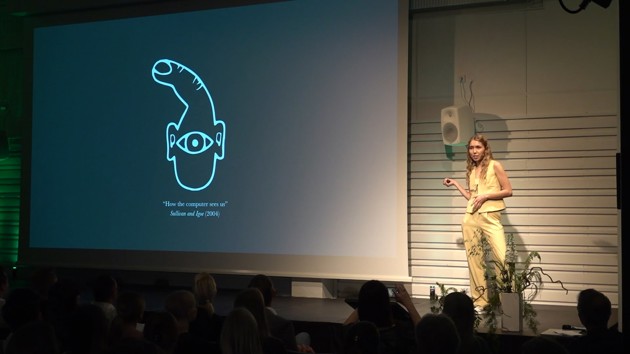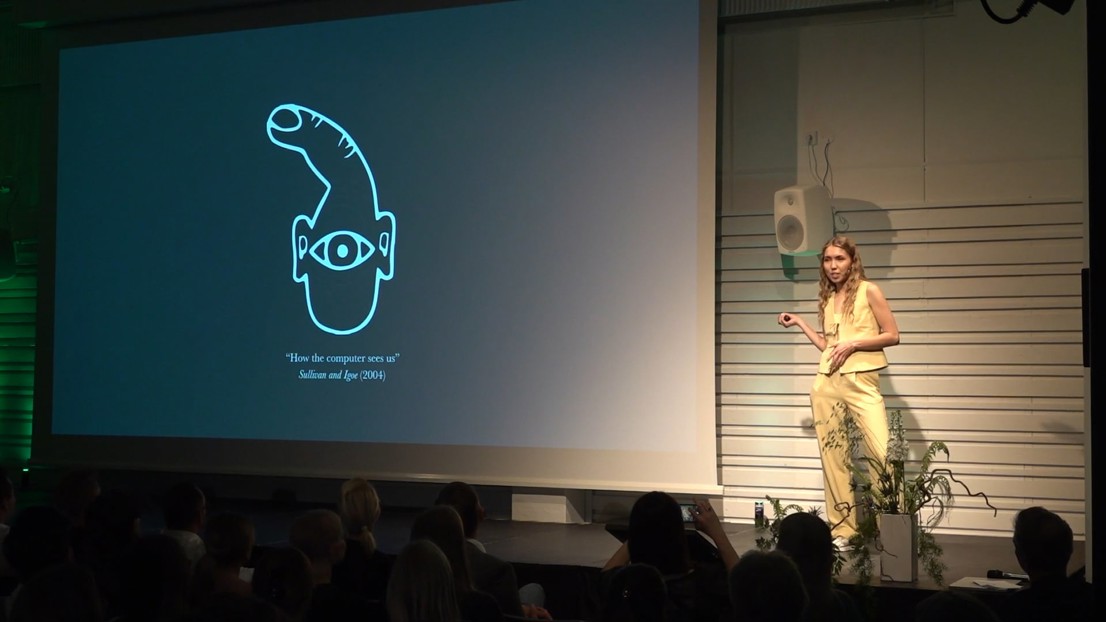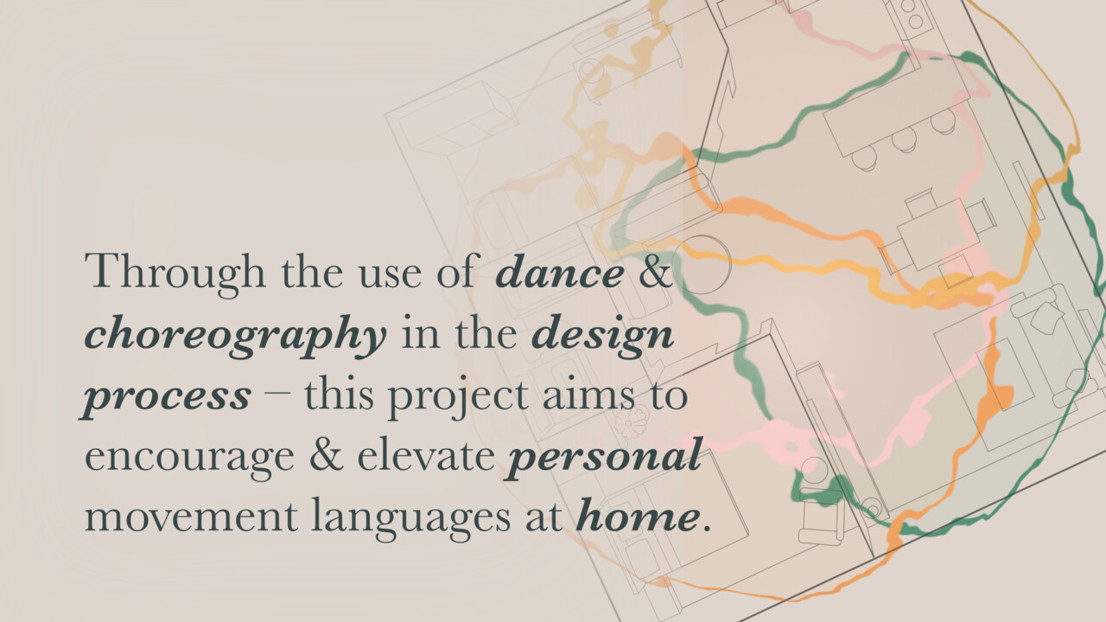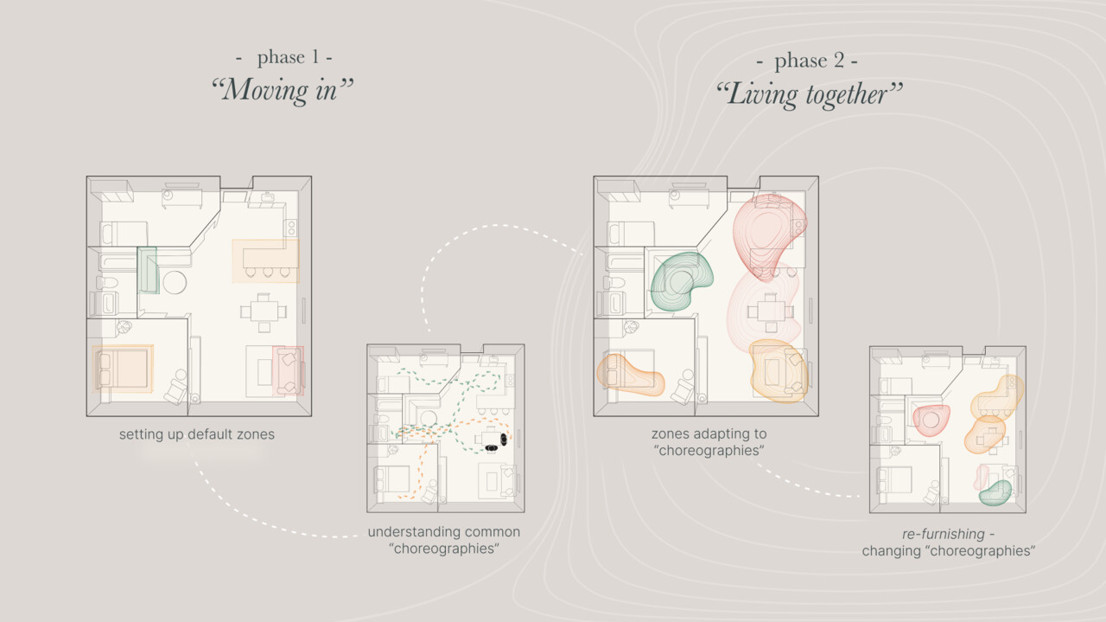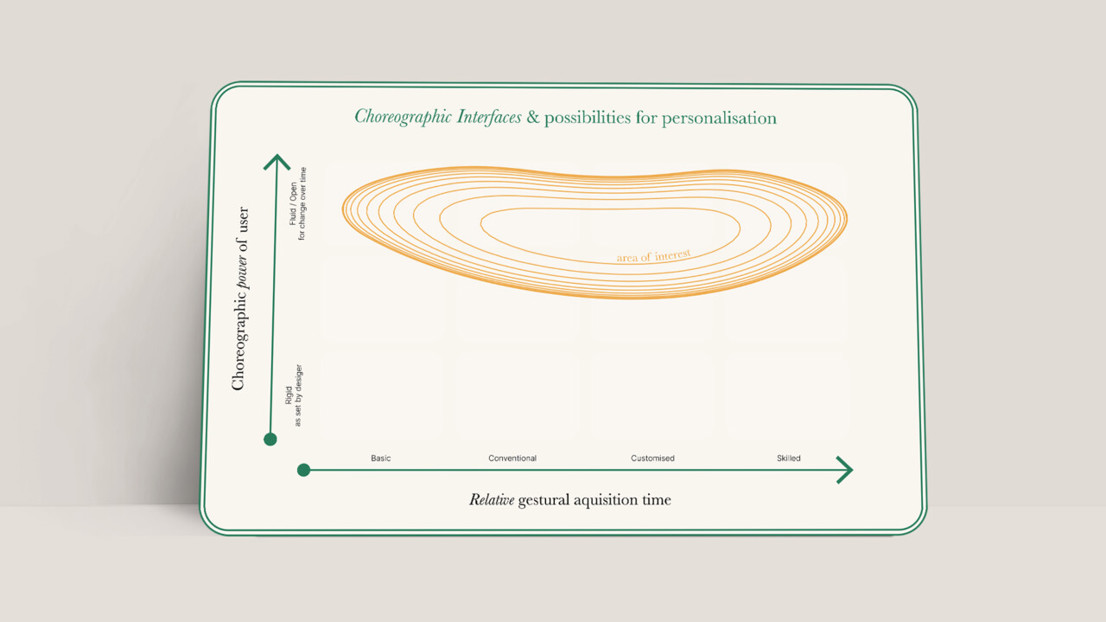This project considers the body in the design process to form more humanistic interactions where the technology adapts to our personal ways of moving.
Choreographic interfaces
We move through and with an increasing number of digital devices at home. Still, the way we interact with our devices is mostly based on us adapting to the technology. By involving dancers and learning from choreographic approaches in the design process, this project aims to start from the body, to achieve more humanistic interactions based on our personal ways of moving. The outcome proposes a “Choreographic Interface” which, manifests itself in contextual zones, reflecting the “choreographies” and routines that naturally develop over time in our homes. The interface, in different ways, encourages & elevates personal movement languages by visualising moments for movement in our everyday lives to elicit joy, play, and wellbeing. The suggestion is a shift away from designers creating each interaction and the users adapting to them – to instead, suggest that designers might create the tools to empower users in utilising their personal ways of moving.
WHY?
We increasingly move through and with technology in our homes. One could, using a dance metaphor, view our homes as stages where we have become unintentional performers to audiences of digital devices. Still, the way we interact with our devices is mostly based on us, as humans, adapting to the technology – leading to technologydriven products, where products even can be seen as choreographing us, rather than humanistic ones.
By involving dancers and learning from choreographic approaches in the design process, this project aims to start from the body to form more humanistic interactions where the technology also adapts to us. Additionally, when being a designer one has a lot of power, since we only understand movement based on our own way of moving. And while claiming what is the right movement, one is at the same time deciding what is the wrong movement – which potentially could lead to excluding a lot of people. This project therefore aim to instead of, as often, trying to find global a movement language where designers would create each interaction, design to empower people in utalising their own ways of moving.
HOW?
The project was approached through choreographic thinking and both professional dancers, people in academia and the industry, were involved. I conducted three workshops with professional dancers, and constantly kept iterating on prototypes where I explored different ways body tracking algorithms could be used. One insight was that digital devices make us unlearn how to move creatively at early stage, and that the spaces we spend time in do not necessarily invite for movement. However, feedback on our movements together with how a space is designed can encourage it. Furthermore, when we live with others, “choreographies” develop over time, where we, without using verbal language, can negotiate the space we share with the people we live with. This phenomenon has different stages and can also be reflected in our relationship with our digital devices.
WHAT?
The outcome of this project redefines what role digital devices might have in our homes, and what needs they might cater to in the future. Instead of using conventional ways of interacting with digital devices (e.g., buttons, phone, voice assistant, motion sensors), a “Choreographic Interface” in proposed. The system learns how people move at home during different hours and manifests it in contextual “zones”, which reflects the “choreographies” and routines that naturally develop over time. While moving through the zones, users are allowed to change the appearance of their space, such as setting the room up for play, meditation, or a morning stretch. The Choreographic Interface, in different ways, turns the home into a place that encourages , empowers and elevates personal movement languages by visualising opportunities for movement in our everyday lives to elicit joy, play, and wellbeing.
This project aims to contribute to the field of interaction design by suggesting a shift away from designers creating each interaction and the users just adapting to them. Instead, the suggestion is the approach of “open to change Choreographic Interfaces” where the designer empowers the user to utilise their personal way of moving.
UID23 | Amanda Wallgren – Grad Project Presentation
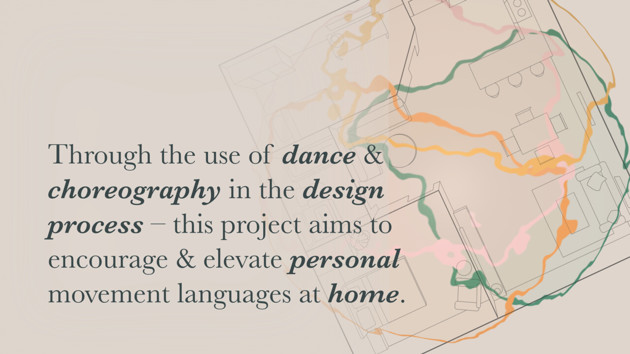
FUTURE SCENARIO: Imagine a home, divided into contextual zones, that take shape based on the “choreographies” the people in the household develop over time?
FUTURE SCENARIO: What if your home turned into a place of discovery and exploring?
FUTURE SCENARIO: What if the first thing you did in the morning was to paint your walls in flowers, supporting you in waking up?
FUTURE SCENARIO: What if your home could support you in your routines by creating a calm oasis for meditation?
FUTURE SCENARIO: What if your home could invite you to a dance and encourage your to move in fun ways to boost your mood.
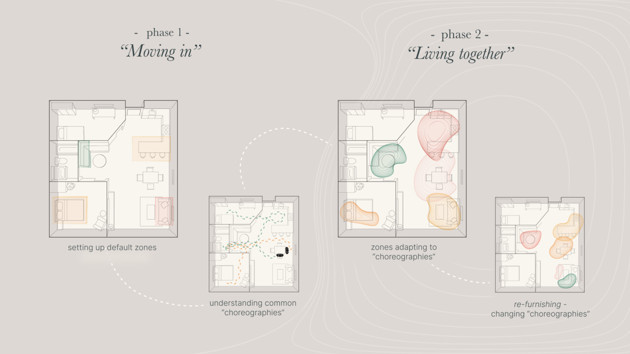
When living with other people one goes through different stages in how space is being negotiated – our relationship with our digital devices could reflect that.
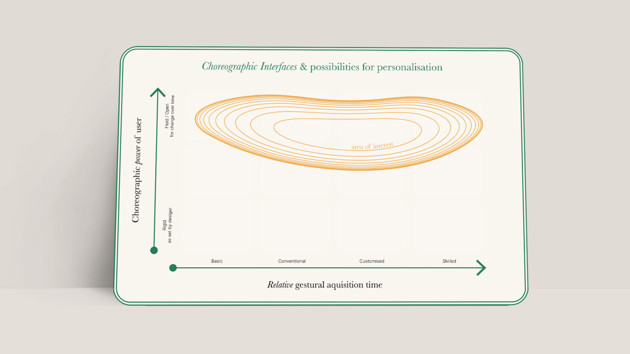
This project suggests a shift away from designers deciding each interaction – to instead create ways that enable users to utilise their personal ways of moving.
PROCESS: Exploring contextual zones, based on location in space, potentially catering to different routines.
PROCESS: Experimenting with different kinds of visual feedback to see how it makes people move in different ways.
I conducted three workshops with four local dancers in Umeå where, among other tings, our relationships to our digital devices were examined.
PROCESS: Prototyping with body tracking since feedback encourages movement

